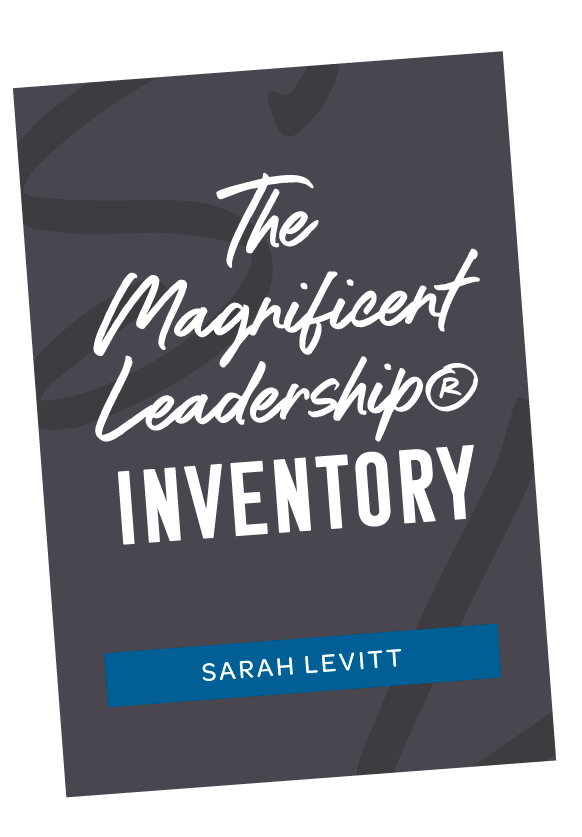I was leading a strategic off-site for 15 members of a senior leadership team a few years ago. A mid-size manufacturing company, they had a strong product line, a great CEO, and a robust senior leadership team. The only problem was that the Sales VP and the Engineering VP were at war. A common conflict, sales thought R&D should be faster, and R&D was furious that sales kept selling things that weren’t fully developed.
The problem for the CEO? They couldn’t be client and prospect-facing often enough because they were playing referee in the sandbox.
This clash wasn’t just about the wear and tear and friction and lost time; this was about lost opportunity and lost revenue.
At the first off-site, I worked with the team to create a strategic, team-designed plan that everyone was responsible for that included specific actions and mile markers. When we reconvened three months later, we openly discussed where we were getting traction and where we needed to tweak things. The team worked in earnest, I coached the CEO, and in 6 months they were a different team entirely. The two VPs and all of their team members (due to what I call the leadership cascade effect) were working in collaboration rather than conflict. And the CEO was able to turn over some of their responsibilities to both leaders rather than being in the middle between them.
A tremendous success all around.
But.
That’s not the whole story.
Augmenting their efforts was something in the background, something I delivered to them on the first day we met. I told them about the concept of fight, flight, or freeze and suggested that if anyone were to experience it, to do nothing.
Because. When we’re triggered (and it happens to all of us; my clients love the story of how, when I was in the middle of an argument with a man that I was dating, I hung up and then called him back simply to hang up again), we’re not equipped to make good decisions about how to relate to whomever or whatever is triggering us. Instead, the emotion that’s churned up — and the thinking that’s entangled with it — is guiding our decision-making.
How do you know if you’re triggered? Most of us can tell by tuning in to what’s happening in our bodies. Our respiration might speed up and/or become more shallow; our hearts typically beat faster and might sound louder within us; we might feel heat in our faces; our muscles might tense and tighten. And because we feel threatened in some way, we typically go in one of three directions: fighting, fleeing, or freezing.
The good news is that with some time away (which might be a walk outside, for example, or postponing a discussion until the next day), we can help ourselves return to center. And center is where it’s at. That’s where we’re calm and grounded, where we’re more likely to seek a solution rather than protect or defend or attack. I’ve found from my own experience and from working with clients, that the more practice we get at knowing what it feels like to be on center, the better we get at knowing when we’re knocked off.
How do you know if you’re centered? You likely won’t feel any urgency to fight, flight, or freeze. Your body will feel relaxed rather than amped up. For clients who exercise, I ask them to describe what it feels like after a run or bike ride or hike. Or after spending time with someone whom they feel completely comfortable with and sustained by. Or taking their dog for a long walk. System relaxed. That’s baseline.
If you question whether this is applicable or helpful for high performing executives, keep in mind that Steve Jobs was known for meditating, Oprah would retreat to her office closet for 10 minutes when she needed a break, and several Fortune 500 organizations from Goldman Sachs to Nike to Google have all implemented mindfulness programs. While there are emergencies that require our immediate attention, discussions between co-workers that create conflict often do not. Instead, simply asking if you can get back to the other person at a future time (later that day, next day, end of the week, etc.), will be sufficient for them and for you.
If you’re triggered, do nothing.
For some tools and techniques for building a leadership toolkit that nourishes a calm center, and helps us to find our way back there, go here.
For more on working with me directly: sarah@sarah-levitt.com I work with talented and successful senior executives whose organizations are in growth mode.
The Magnificent Leadership® Executive Dinners Program is an ideal place to share and learn best practices with peers, leverage your network, and have access to me all in one. (And enjoy outstanding dinners in East coast cities.) To inquire about an invitation or nominate someone: sarah@sarah-levitt.com
Go here to learn about my unique new programs in 2020 and ways of working together.




 Are you elevating your leadership as your business grows?
Are you elevating your leadership as your business grows?